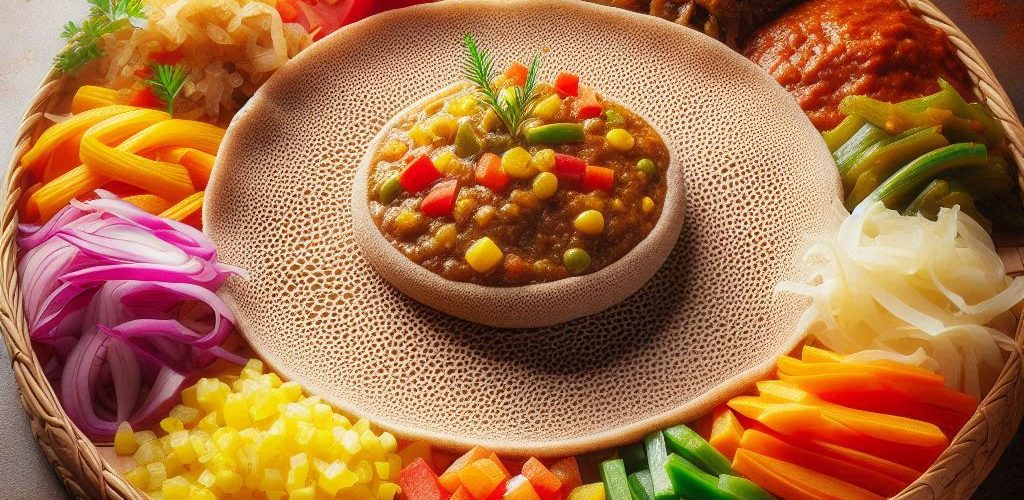Ethiopian cuisine is a vibrant tapestry of flavors, colors, and textures, with one dish standing out as the staple of many meals: Injera. This traditional sour, fermented flatbread is more than just an accompaniment; it’s a culinary experience that embodies the heart and soul of Ethiopian culture.
Injera is distinctively characterized by its unique spongy texture and slightly sour taste, which is achieved through a fermentation process. Typically made from teff flour, a gluten-free grain native to Ethiopia, injera offers a rich source of protein, fiber, and essential nutrients. The use of teff not only contributes to the bread’s nutritional profile but also imparts a slightly nutty flavor, enhancing the overall dish experience.
The preparation of injera is an art form. The process begins with mixing teff flour and water to create a batter, which is then left to ferment for several days. This fermentation is crucial as it develops the characteristic sour taste that defines injera. The batter is poured onto a large flat griddle called a “mitad” or “kook,” cooked until bubbles form, and then removed when it’s soft yet cooked through. This cooking technique creates the signature spongy texture, with a plethora of small holes on the surface that make it ideal for soaking up rich stews known as “wot.”
In Ethiopia, meals are communal and typically served on a large platter lined with injera. Diners tear off pieces of the flatbread to scoop up various wot, which range from lentil dishes to spicy meats and vegetables. This method of eating not only promotes a sense of togetherness but also enhances the culinary experience. The injera acts as both a utensil and a flavorful component of the meal, absorbing the spices and juices of the stews it accompanies.
While injera can be enjoyed in various contexts, it is particularly significant during celebrations and festivals, symbolizing hospitality and community. Whether it’s for a family gathering or a special occasion, this versatile bread plays an integral role in Ethiopian culinary traditions.
Modern adaptations of injera have made it more accessible to a global audience. Many chefs and home cooks outside of Ethiopia are discovering how to prepare injera, incorporating it into fusion dishes or serving it alongside non-Ethiopian meals. This cross-cultural blending showcases the adaptability of injera and highlights its potential as a unique culinary ambassador.
For those looking to delve deeper into Ethiopian cuisine, experimenting with homemade injera is a rewarding endeavor. The process might initially appear daunting due to the fermentation aspect, but the end result is much celebrated. A soft, slightly tangy flatbread that effortlessly complements a range of dishes—a true testament to the beauty of traditional cooking.
Injera is more than just a flatbread; it represents a culinary journey through Ethiopian heritage and culture. With its sour flavor and cultural significance, it invites everyone to partake in the rich tapestry of Ethiopian cuisine. Whether you are enjoying it in an authentic Ethiopian restaurant or attempting to create it in your own kitchen, injera promises an adventure for the palate, bringing people together in delicious harmony.




Add comment